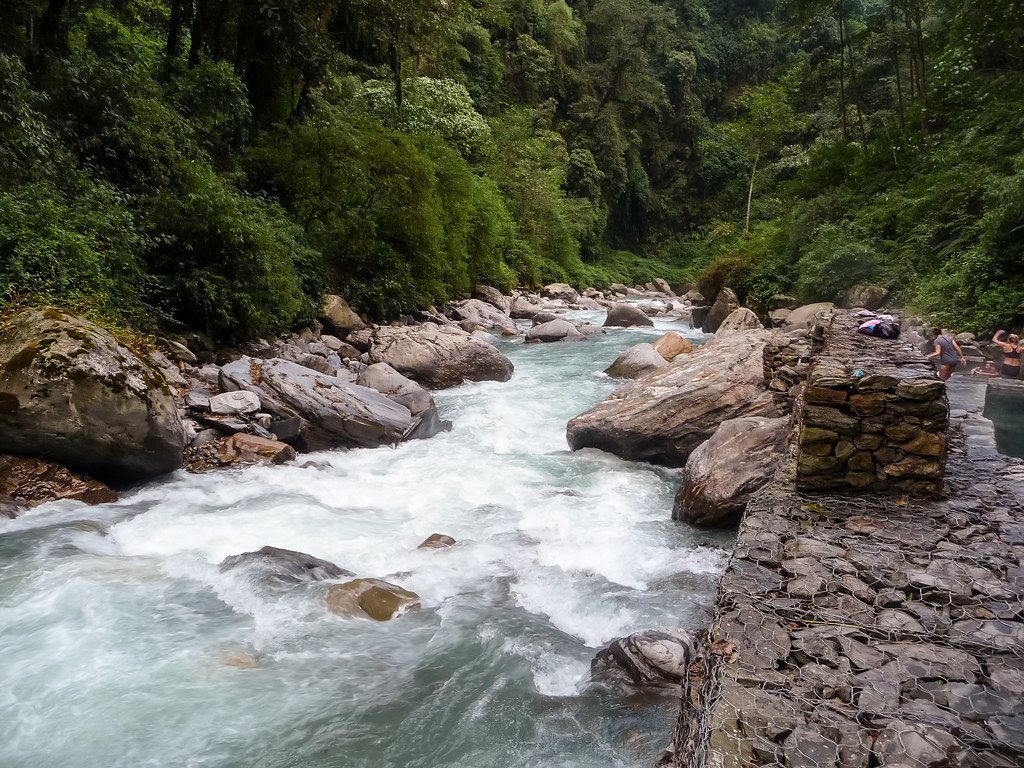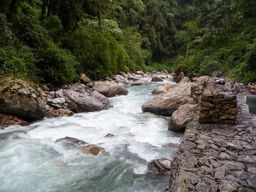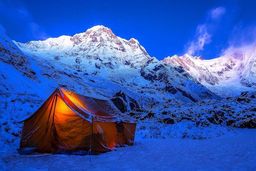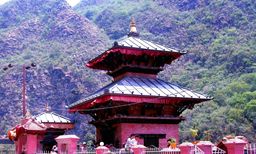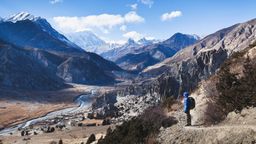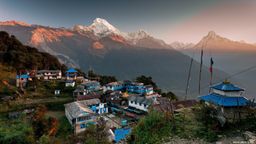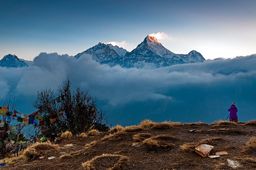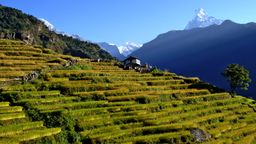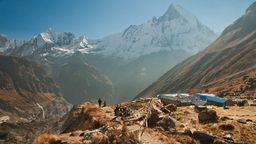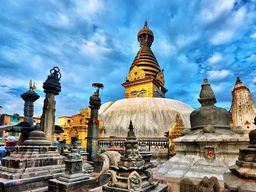Day 13
Free day in Pokhara or self sight seeing around pokhara valley (option are)
Pokhara is a remarkable place of natural beauty. Situated at an altitude
of 827m from the sea level and 200km west of Kathmandu valley, the city is
known as a center of adventure with several beautiful lakes and offers stunning
panaromic views of Himalayan peaks.
The serenity of lakes and the magnificence of the Himalayas rising behind them
create an ambience of peace and magic. So today the city has not only become
the starting point for most popular trekking and rafting destinations but also
a place to relax and enjoy the beauty of nature.
Pokhara is part of a once vibrant trade route extending between India and
Tibet. To this day, mule trains can be seen camped on the outskirts of the
town, bringing goods to trade from remote regions of the Himalaya. This is the
land of Magars and Gurungs, hardworking farmers and valorous warriors who have
earned worldwide fame as Gurkha soldiers. The Thakalis, another important
ethnic group here, are known for their entrepreneurship.
The climate of Pokhara is slightly warmer than Kathmandu with daytime
temperature hovering around 15 degrees Celsius in winter and 35 degrees in
summer. The monsoon season which lasts from mid-June to mid-September is very
wet; in fact Pokhara records the highest rainfall in the country. Best time to
visit is between October and April.
The activities of foreign visitors to Pokhara focus around two districts known
as Damside and Lakeside (or Pardi and Baidam, in Nepali, respectively). These
two areas, with their strips of hotels and restaurants, are a few kilometers
south-west of the main Pokhara bazaar. More
Sarangkot
The view of the Annapurna Himalaya from Sarangkot is almost a religious
experience. From here, you can see a panoramic sweep of Himalayan peaks, from
Dhaulagiri (8167m) in the west to the perfect pyramid that is Machhapuchhare
(6997m) and the rounded peak of Annapurna II (7937m) in the east. Most people
come here at dawn or dusk, when the sun picks out the peaks in brilliant
colours.
Fewa lake
Fewa Lake, the second largest lake in the Kingdom, is the center of attraction
in Pokhara. It is the largest and most enchanting of the three lakes that add
to the resplendence of Pokhara.
Mahendra cave
Another of nature’s wonders in Pokhara is the Mahendra Gupha. This large
limestone cave is locally known as the House of Bats, an apt name for it. A
two-hour walk to the north of Pokhara, it is best to bring your own torch to
see the stalactites and stalagmites, as well as the local winged residents.
Seti River
Another of Pokhara’s natural wonders that unfailingly interests visitors is the
Seti river. Flowing right through the city, this river runs completely
underground at places. Amazingly, at certain points the river appears hardly
two meters wide. But its depth is over 20 meters! Mahendra Pul, a small
bridge near the old Mission Hospital, provides a perfect view of the rivers’s
dreadful rush and the deep gorge made by its powerful flow.
Barahi Temple
The Barahi temple is the most important monument in Pokhara. Built almost in
the center of Phewa Lake, this two-storied pagoda is dedicated to the boar
manifestation of Ajima, the protectress deity representing the female force
Shakti. Devotees can be seen, especially on Saturdays, carrying male animals
and fowl across the lake to be sacrificed to the deity.
Museum
The Pokhara Museum, located between the bus stop and Mahendra Pul, reflects the
ethnic mosaic of western Nepal. The lifestyles and history of ethnic groups
such as the Gurung, Thakali and the Tharu are attractively displayed through
models, photographs and artifacts. One major attraction is a display
highlighting the newly-discovered remains of an 8000-year-old settlement in
Mustang.
Open daily, except Tuesdays and holidays, from 10 am to 5 pm
Devi’s Fall
Locally known as the Patale Chhango (Hell’s Fall). Devi’s Fall (also known as
Devin’s and David’s) is a lovely waterfall lying about two km south-west of the
Pokhara airport on the Siddhartha Highway. Legend has it that a trekker (Devin,
David..) was washed away by the Pardi Khola and disappeared down into an
underground passage beneath the fall.
